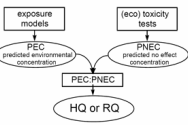
Models and databases
Wageningen Marine Research has several fields of expertise where use is made of both models and databases.
What are models used for?
Models are use for topics such as the following:
- Determining the effect levels like LC50 and NOEC of a compound after an ecotoxicological experiment has been run
- Determining the effects of a compound or compound mixture tested in a multi-species ecotoxicological test design using mesocoms
- Risk assessment of varies human activities at sea (or elsewhere), including:
- Offshore oil and gas industry
- Offshore wind turbines
- Fisheries
- Shipping
Models are also developed for addressing newly emerging topics including ecosystem bases approaches to marine resource management, cumulative effects, etc.
On-going development of models
To enable Wageningen Marine Research to stay at the forefront, on-going development of existing modelling tools, as well as building new models using novel approaches, form an integral part of our research. This effort includes widening our knowledge base by implementing new modelling tools and co-operating with other research institutes and partners.
What is a model?
Observe that model is a very broad term. 'Model' may mean a lot of different things to different people. Here we used a definition of any mathematical or numerical abstraction that helps researchers improve their understanding of their subject. Hopefully this representation of reality will is helpful in communicating our findings to a much wider public.
Databases
Databases are constructed and maintained to aid in our research. They provide a means to effectively gather and store various kinds of information. When required, strict control measures can be implemented to insure the quality.
Most importantly, databases offer good means of querying the data, so that it can be used to deliver the maximum amount of knowledge. Linking information gathered from different sources is one more strength of using databases.

